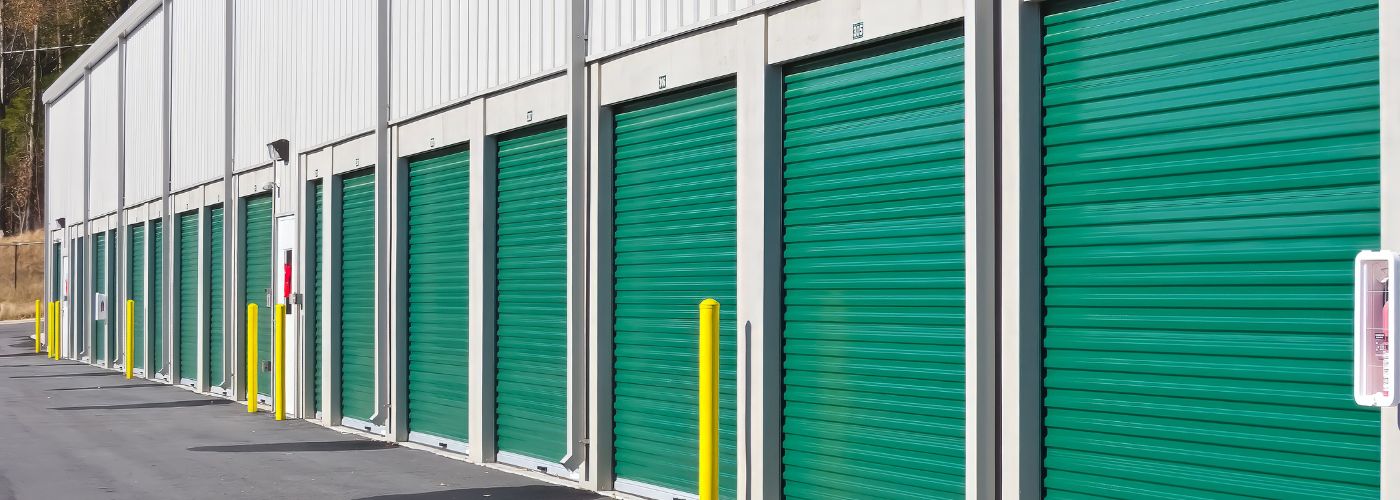Have you ever been late to work because your roll-up door wouldn’t budge? Roll-up doors are a staple for many businesses, but they can become problematic when least expected. Troubleshooting these issues not only saves you time but can also save money in repair costs. In this article, we’ll break down common roll-up door challenges and offer straightforward solutions.
How To Fix Issues With Roll-Up Doors
Fixing issues with roll-up doors can often be straightforward if you know what to look for. Start by thoroughly inspecting the door’s components, including the tracks and rollers, to ensure they are clean and free from debris, as dirt can cause the door to operate poorly.
If the door isn’t opening or closing smoothly, check for any visible signs of wear or damage in the rollers or tracks, which may need lubrication or replacement. Additionally, monitor the door’s operation for any unusual noises, which can indicate mechanical problems that need attention.
Regular maintenance, including tightening screws and bolts, can prevent many common issues and extend the life of your roll-up door. If problems persist, consulting a professional may save you time and ensure the repair is done safely.
Identifying Misalignment Issues
When dealing with roll-up doors, identifying misalignment issues is crucial. One cause of misalignment is the wear and tear on the door tracks over time. If the tracks become bent or obstructed, the door may not glide smoothly, leading to uneven gaps and difficulty in operation.

Another factor that can contribute to misalignment is improper installation. If the door was not installed correctly, it may sit unevenly, causing stress on the rollers and tracks. Regular inspections can help identify these misalignment issues early on, allowing for timely adjustments or repairs.
Additionally, environmental factors such as temperature fluctuations and humidity can affect the materials of the door and its components, potentially leading to warping or swelling.
It’s important to consider these factors in both the initial installation and ongoing maintenance of roll-up doors.
How to Fix Stuck or Jammed Roll-Up Doors
When dealing with stuck or jammed roll-up doors, the first step is to assess the tracks. Dirt, debris, or even small objects can obstruct movement. A quick inspection can save time and frustration. Use a soft brush or a cloth to clean the tracks thoroughly.
Sometimes, a bit of lubrication can also work wonders; a silicone-based spray can ease things up without attracting dirt.
Be sure to lubricate the rollers and hinges as well, as these components can contribute to the door’s performance. After lubrication, manually test the door by attempting to lift it slowly. If it remains stuck, check for any obstructions in the path of the door, such as debris or foreign objects.
If the door is electronically operated, check the power supply and ensure that the remote or wall switch is functioning properly. Sometimes, replacing a simple battery or resetting the system can resolve the issue.
Common Electrical Failures and Their Fixes
When troubleshooting issues with roll-up doors, understanding common electrical failures can save time and frustration. One frequent culprit is a malfunctioning motor. If the door isn’t opening or closing, check for power supply issues.

Sometimes, loose wiring connections can be the simple fix you need. A multimeter can help identify dead circuits, ensuring your door gets the power it requires.
Another common concern involves the safety sensors. These sensors are designed to prevent the door from closing on obstacles but can misalign over time. Regularly cleaning the sensor lenses can improve functionality and prevent unnecessary operational delays.
Additionally, if you notice the door operates randomly, inspect the control panel; it may need recalibration or reset. By focusing on these areas, many roll-up door issues can be resolved quickly, enhancing their reliability and life span.
Adjusting Tension on Roll-Up Door Springs
When trouble shooting issues with roll-up doors, one common challenge is adjusting the tension on roll-up door springs. Over time, these springs can lose their elasticity, leading to doors that refuse to open or close fully.
To solve this, you’ll want to locate the adjustment screws on the spring assembly. A few clockwise turns can restore that vital tension, allowing your door to operate smoothly again.
Another part that needs to have the tension checked is the door opener mechanism. If the opener is struggling to lift the door or if the door opens unevenly, the tension on the opener’s chain or belt may need adjustment.
Locate the tension adjustment mechanism on the opener; this can usually be found on the motor unit itself. By tightening or loosening the tension, you can achieve a balanced operation, ensuring the door opens and closes properly without straining the motor.
Identifying Broken Roll-Up Door Panels
When dealing with roll-up doors, one common issue is identifying broken roll-up door panels. A damaged panel can disrupt the entire system, leading to malfunctions or operational delays.
Check for visible cracks, dents, or holes, as these signs can often be the root of your troubles. Regular visual inspections can save you time and trouble, letting you spot problems before they escalate.
Another common issue with roll-up door panels is the misalignment that can occur over time. Panels that have shifted from their original position may not seal properly, allowing drafts, moisture, or pests to enter the space.
This misalignment can be caused by wear and tear, accidental impacts, or faulty components. To address this, examine the hinges and tracks for any obstructions or signs of wear that may be causing the misalignment.
Additionally, consider the weather stripping around the panels. Worn or missing weather stripping can not only lead to energy loss but also contribute to the deterioration of the panels themselves. Replacing compromised weather stripping can enhance insulation and prolong the life of the door system.










